7 Tips on How to Refresh Prepping Disaster Supplies Easily
Looking to refresh prepping disaster supplies? It has been suggested that every family have at least a 3-day supply of non-perishable food and water, as well as a first aid kit in their home at all times. Unfortunately, there’s always that slim chance that an unexpected disaster could affect your area for a much longer period of time than that and a 3-day supply simply wouldn’t cut it. This is just one of many reasons why I always encourage people to focus on stockpiling a much larger emergency supply, just in case.
Maybe you’ve already stockpiled enough emergency supplies to sustain a small army for a few weeks? As hard as this may be for you to hear, that doesn’t mean that you’ve finally arrived. After all, several of those dust-covered supplies you’ve been storing for ages won’t do you any good if everything is out of date when it matters the most.
In case you missed this post, What’s In Your First Aid Kit? This is one of the first aid kits (to fill) I purchased, I have several. FIRST AID KIT
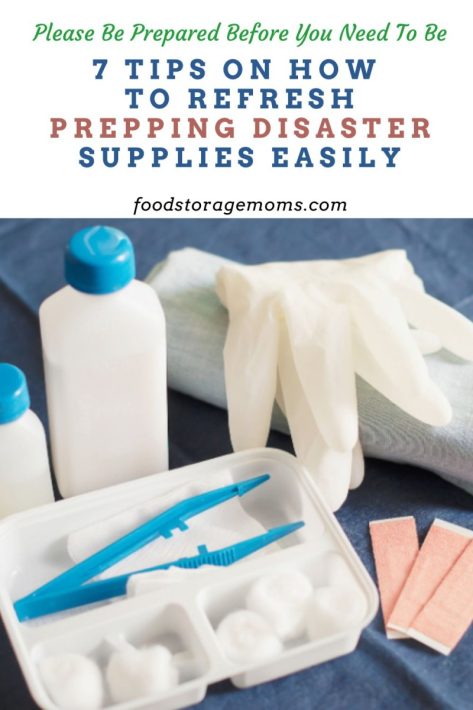
Refresh Prepping Disaster Supplies
Here are some tips on how to refresh prepping disaster supplies:
1. Rotate your food regularly.
Non-perishable food can last for years, but that doesn’t mean it will taste good after that long. Most canned goods will last for about 2-5 years, so make sure to rotate your cans every couple of years. For dry goods like rice and pasta, aim to rotate them every 6 months to 1 year. And don’t forget about baby food and formula—these items have a much shorter shelf life.
Part of your preparation plans should include having an inventory of food, water, emergency gear, and other items you want in place on a consistent basis. Once that inventory list is put together, you can use it as your guide each time you take the time to review what is on hand at any given time.
As part of that review, I suggest you take the extra time to check the “best used by” dates. That way you can see what needs to be used NOW, before it gets so old you won’t make it part of your meal planning. If you move the oldest items to the front, you’ll be more prone to grab them the next time the meal calls for that item. Better yet, plan your meals around the use of those items so you know they’ve been accounted for and put to use on a timely basis.
If the item is past the dates shown, you’ll need to determine if you feel comfortable using it, or if it needs to be thrown out. Be sure to replace what you’re short of due to regular usage and the loss of the item from being too old.
I think that taking inventory should be done every three to six months, just to be safe and confident in the amount and quality of your food stash.
2. Check the expiration dates on your first aid supplies.
Bandages and antibiotic ointments don’t last forever, so make sure to check the expiration dates on these items and replace them as needed. Depending on where you live and the temperature and humidity your supplies are subject to, replacement may need to take place more often. No matter what you’re storing, putting things for later use in a cool and dry location can extend their life.
Bandages with an adhesive can experience having that adhesive lose its properties, causing them to stick to the packaging, or not stick at all. If the ointments have medicinal properties, they can lose their potency over time, so they may still be applied to the sore or wound, but may not have the potential to kill germs or help heal as originally designed.
3. Inspect your emergency kit regularly.
Take inventory of your disaster supplies every few months to make sure nothing has been damaged or come up missing. At the very least, you should be doing this at least every 6 months. This is also a good time to adjust your supplies based on the needs of your family (for example, if you have a new baby, you’ll need more diapers, formula, and other baby necessities).
If your emergency kit includes things that can go bad, like fuel or bug repellant, you should consider a rotation system for those like you have for your food supplies.
If the kit items have been subject to moisture, make sure they haven’t experienced rust, mold, or other damage that makes them unfit for use. You’ll want to test things like flashlights to make sure the batteries are working, and that you have replacements. When the emergency hits, it’s too late to catch up!
4. Keep your disaster supplies in an easily accessible place.
In the event of an emergency, you’ll want to be able to grab your disaster supplies quickly and get out of the house as quickly as possible. Choose a place that’s in your home that’s close to an exit and away from any windows in case you need to evacuate during a hurricane or severe storm. I’ve generally kept mine in the closet close to the back door, or on shelves in my garage. The house was better since it had climate controls, but the heavier items were in the garage.
The best way to maintain your emergency supplies for a longer duration is to keep them in a dry cool place that’s away from sunlight. That’s because the sun produces heat that can drastically reduce the shelf life of the perishables in your emergency kit.
5. Store water in clean, airtight containers.
It’s important to have enough clean water on hand in an emergency, but it’s just as important to ensure that water is properly stored so it doesn’t go bad. Make sure to store water in clean, airtight containers (like safe plastic bottles or jugs) and keep them in a cool, dark place—preferably not the fridge for space reasons, as it may hasten the process of degradation. Aim to replace your stored water every 6 months just to be safe. This one is good for 5 years, H2O ResQ Water Storage
I’ve found a product called Water Preserver that is a true quality find. It can preserve your water for up to five years if the water is treated as directed. It can be a real hassle to rotate the water every six months, particularly with your large storage containers and tanks. Check it out, you’ll be glad you did.
6. How and when to refresh your fuel supply.
In any kind of emergency, it’s crucial to have a well-stocked emergency kit. This means having everything you need to survive for at least 72 hours, including food, water, first-aid supplies, and a way to keep warm. If you have a generator, you’ll also need to make sure you have a decent supply of fuel to keep it running. Here are some tips for how and when to refresh your emergency kit fuel supply.
First, always store fuel in a cool, dry place. Gasoline and other fuels can deteriorate over time, so it’s important to check the expiration date on your stored fuel and rotate it out as needed. The following are fuels that you may already have in your emergency kit along with how often they need to be replaced.
- Gas for your generator should be rotated out every 6 months. There are some additives, make sure they are compatible with your type of fuel.
- Kerosene for your camp stove needs to be replaced at least once a year. Make sure you understand how to use kerosene so you don’t put the lives of your family at risk.
- Just to play it safe, unopened white gas canisters for a camp stove should be used up or replaced every 2 to 3 years. I like butane for my cooking needs.
- Maybe you’ve been told that your sealed fuel canisters can last for years and years without being replaced. But you should still check the canisters to make sure that they haven’t rusted or taken on any damage that may affect your fuel. Better yet, rotate them periodically and use the older canisters to cook as you test and practice your emergency prep plans.
Second, if you live in an area prone to hurricanes or other severe weather events, be sure to top off your emergency kit fuel supply before the storm season begins. This will help ensure that you have enough fuel to last until help arrives. Finally, if there is ever a widespread power outage, don’t wait until your generator runs out of fuel before refueling it. It’s always best to have a full tank of gas on hand so that you’re prepared for any eventuality, and that includes the gas in your car.
7. Replace any used-up items from your kit as needed.
Don’t make it a habit to use emergency supply items from time to time without replacing them. Your inventory should always be as full as possible all the time. This goes for anything that you may have in your emergency supply kit. The perfect example of this would be using up all of the bandages on your kiddos from your first-aid kit without replenishing your supply.
Should a disaster strike and cause bodily injuries to you or one of your family members, you wouldn’t have anything to help cover the wounds. So always be sure to replace any supplies that you’ve used as quickly as you can.
More Refresh Prepping Disaster Supplies
- 5 Prepping Things You’re Not Doing That You Should Be
- 11 Dangerous Prepping Mistakes
- 37 Cheap Items that Will Remain Priceless in Prepping
Final Word
While having enough food, water, and emergency supplies is extremely important, making sure that they’re fresh when you need them is equally so. By following these simple tips, you can rest assured knowing that your disaster supplies are up to date and ready for anything. Remember: it’s always better to be safe than sorry! What tips do you have for how to refresh prepping disaster supplies? May God Bless this world, Linda
Copyright Images: First Aid Kit AdobeStock_119030890 by jarabee123

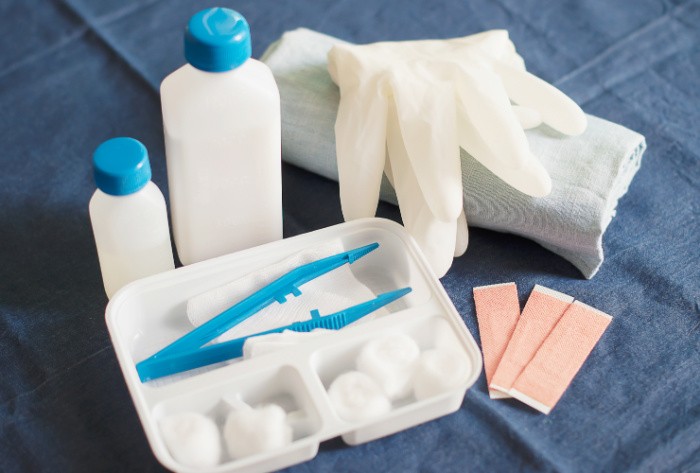

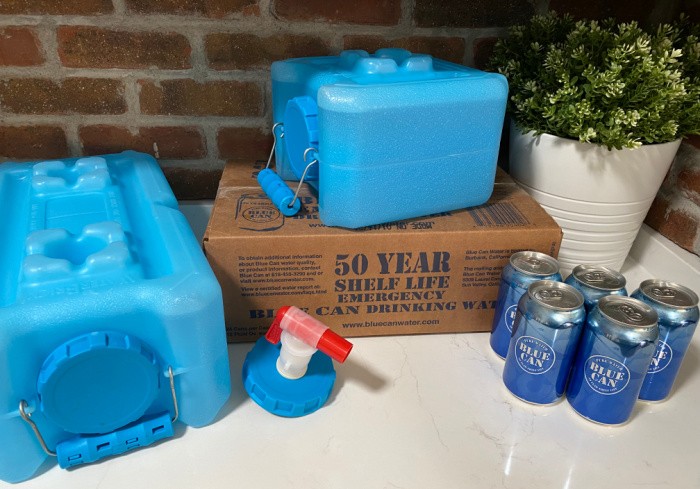
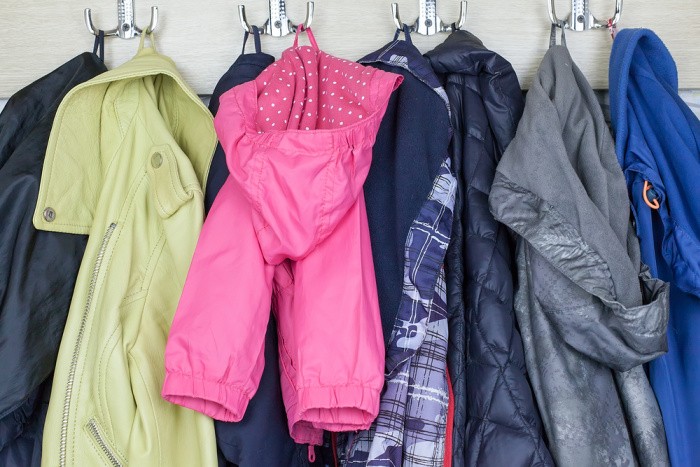
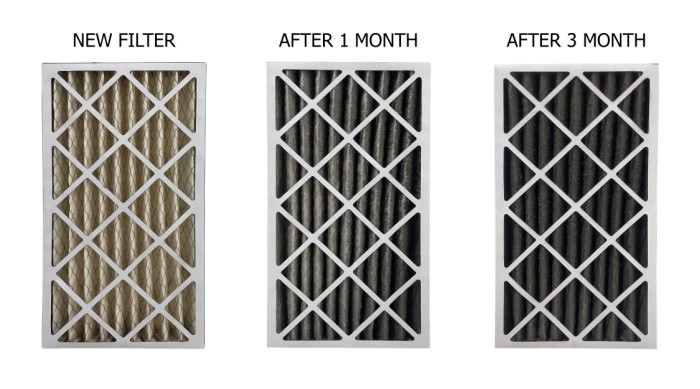
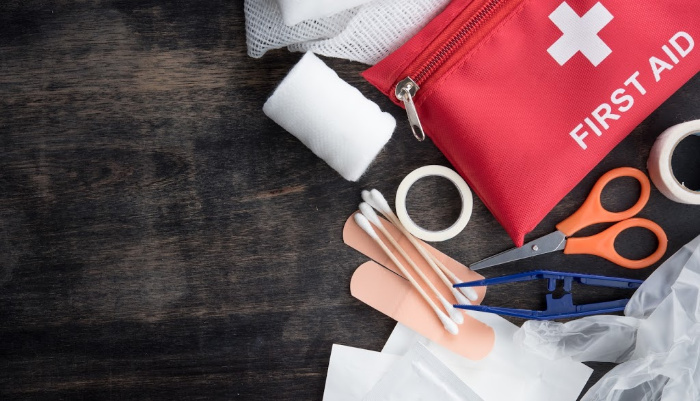
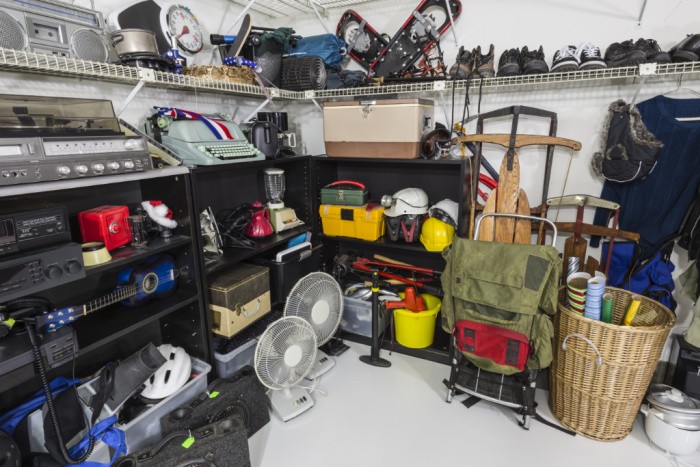
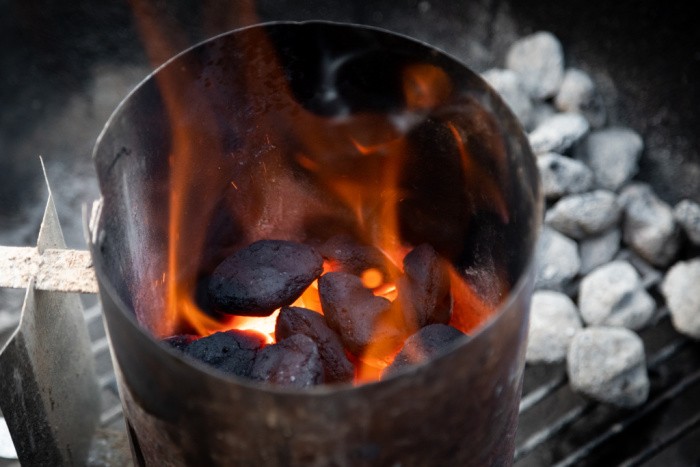


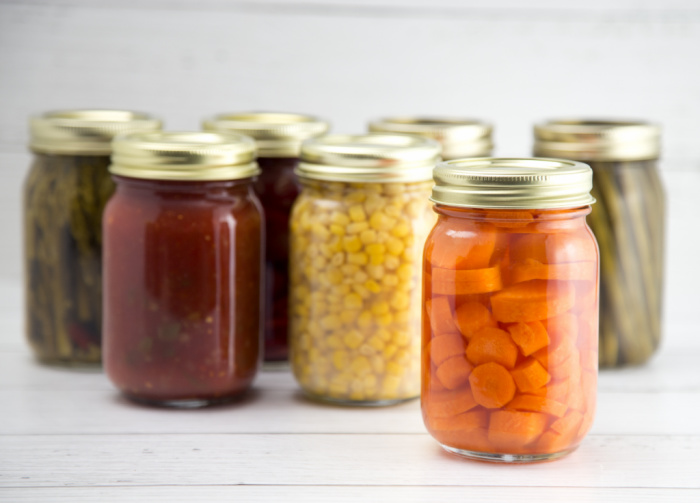




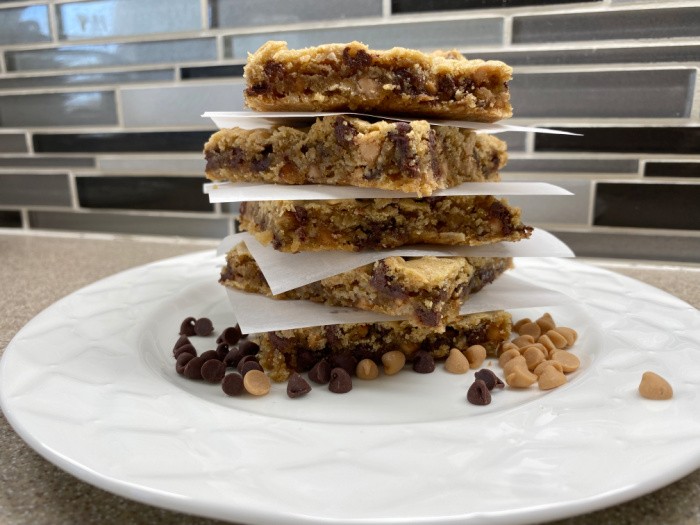

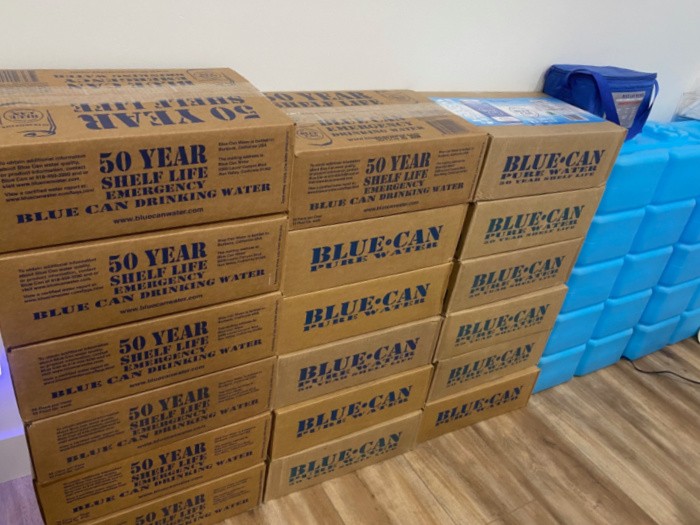
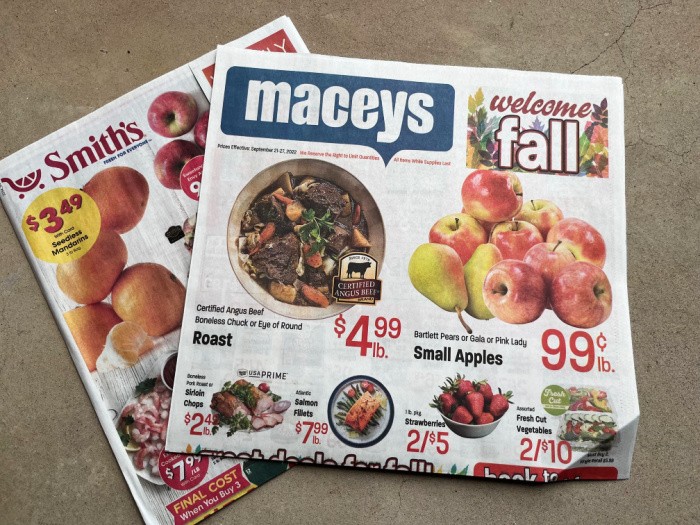
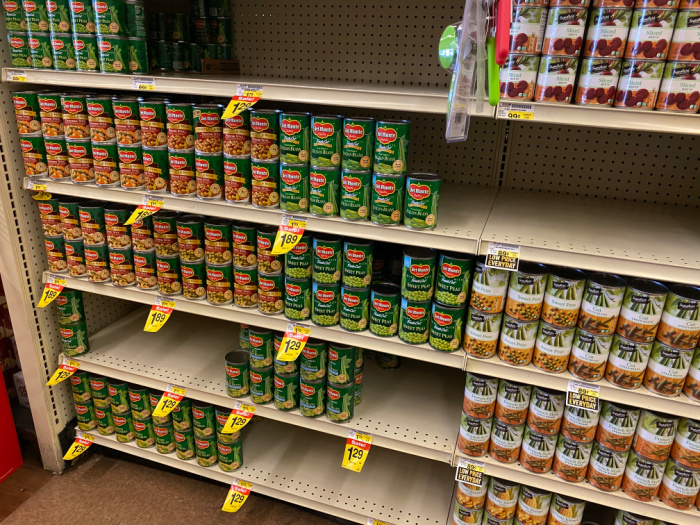

Ahh the sound of logistics
Hi Matt, yep, just a reminder to just check things out. Linda
Hey, Linda: I went to Amazon to buy Water Preserver, but could not decipher which one you might have meant. There are numerous varieties offered and none that really struck me as “that’s the one she’s talking about”.
Please either give a link or further explanation on WHICH product you are talking about! Thank you so MUCH, sweetheart!
Hi Joyce, thank you for bringing this to my attention. I’m so frustrated because the brand I have used for over 15 years is nowhere to be found. I am opting for this one right now. I just added the link to the post, thank you again!!! Linda. https://amzn.to/3SZhCeR
Hey, Linda:
Just so you know, I put a link up on “Ask a Prepper” website (on their comments section of an artilce about meals in a jar that just came out) about making up your mason jars of Chicken Noddle Soup, and other soups. So many people were asking about the proportion of water added and how many people the recipes would serve, I figured your recipes were so complete, I should share with others.
I hope that was O.K. with you? AND I send you endless thanks for this valuable work you are doing for us all! As soon as our company leaves on Monday a.m., I am going to start creating soups from your recipes!
Joyce S.
OOPS!! Sorry about above typos again! I really must learn to reread my comments more carefully before posting!!
Oh, yeah, and my comments on Ask a Prepper are not relate to my actual name. On there, I often use JESS…FYI, so you can find the post!
HAH!
Joyce S.
Hi Joyce, I didn’t see any typos, LOL! All is well! Linda
Hi Joyce, Oh, you are so nice, my friend! I have a few of those soups in a jar, which I will be updating and sharing very soon. Soup time is here!! Linda
Hi, Linda: I know this comment is not a reply to the subject of soups, but wanted you to know about turkeys. I just called Wegman’s and they have their annual Turkey Sale on for this week at 58 cents a lb.! That is very close to what it was last year, I believe, so that’s a relief…
Joyce S.
Hi Joyce, oh my gosh, that is so awesome!!! I sure hope people see your comment, that’s the absolute best price I have seen this year!!! Thank you for sharing!! Linda
Thanks so much, Linda. It looks really good. I have already put it on my Amazon Wishlist!!
Best always,
Joyce E. Stotts
MSED and Certified Natural Health Professional
HI Joyce, me too! I need a few bottles to stock to fill some containers I just purchased! Linda
Linda:
I always try to have a good supply of items for health and healing in my home. I can only use one type of band aid so when I get to half a supply I renew it. that goes along with many things I have a supply of.
HI Jackie, I totally agree some band-aids are not as good as others. Only buy the ones that you like!! I do the same thing. Linda
My sister is a retired pharmacist and many years ago she suggested that January 1st is a great day to go through your medicine cabinets and first aid kits. Dispose of expired items and replace missing items. It is a good day, we are all winding down from weeks of holiday fun and stress, most of us have the day off and even if you were out late the night before, this task doesn’t take all that long. Since this is not a task that most of us prioritize, it’s nice to have a specific day
Hi Topaz, I like that date! I always change the batteries in the smoke and carbon monoxide detectors on that date! Great idea to rotate, discard, and add those first aid kit items we all need. I love it! Linda
My father purchased a new generator and a power inverter, so we have those for the next storm. I’m happy for that. And with the dehydrator he gave me as a gift, I can put up food.
Checking the flashlights, the stoves and emergency radios, etc., takes just a day and maybe one evening if you have a lot of stuff like I do. And for a prepper it can be fun and provide peace of mind to look at all the useful items you have acquired.
Next thing for me to acquire are water containers and heavy duty shelving for my supplies. And water is very heavy and so are marine batteries, generators and cast iron cookware. I need my “prepper space” so I can keep track of everything and access it easily. I still need to purchase the rechargeable batteries to use with my solar charger, so shelves and a table to work are in order. I may add a folding table which is portable enough to put in a car and go if the need arises.
Hi Frank, great idea, I bought the shelving from Costco with heavy-duty wheels, so I could move them around when needed. I started with two and kept adding as I needed them. Strong shelving is critical for weight. I love hearing you have a generator and power inverter. Good job! A dehydrator is so helpful to dry food, I love mine!! Life is good when we know what we have. These hold 800 pounds. Now they sell some that hold 1000 pounds. https://www.costco.com/trinity-ecostorage-4-tier-wire-shelving-rack-with-wheels%2c-48%22-x-18%22-x-72%22-%2c-nsf%2c-chrome-color.product.11539176.html
Linda